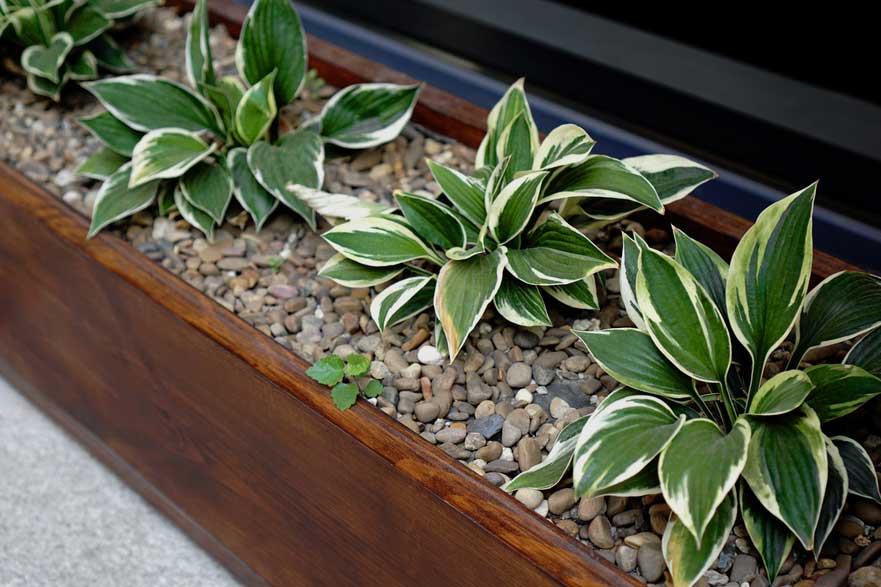
Gardeners often face the challenge of protecting their hostas from slug damage. These lush, shade-loving plants are a favorite target for slimy pests, especially after frost has set in. Cutting back hostas at the right time can play a crucial role in minimizing slug issues.
Trimming hostas after the first frost helps reduce slug populations by eliminating their hiding spots and food sources. This simple step can make a big difference in maintaining healthy plants come spring. Many gardeners find that prompt action leads to stronger, more vibrant hostas in the following growing season.
Timing is key when it comes to this garden task. Waiting until after frost ensures the plants have stored enough energy for winter dormancy. It’s a straightforward process that can be completed with basic garden tools and a little know-how.
Understanding Hostas and Slugs
Hostas and slugs have a complex relationship in gardens. Slugs view hostas as a delicious food source, while gardeners cherish these shade-loving plants for their lush foliage.

Hosta Biology and Growth Cycle
Hostas are perennial plants native to East Asia. They thrive in shady areas and produce large, attractive leaves. Most hosta varieties emerge in spring, unfurling their leaves as temperatures rise.
Hostas grow from underground rhizomes, sending up new shoots each year. Their leaves come in various shapes, sizes, and colors, from solid green to variegated patterns.
During summer, hostas may produce tall flower stalks with lavender or white blooms. As autumn approaches, the plants begin to slow their growth and prepare for winter dormancy.
Slug Habits and Hosta Preference
Slugs are nocturnal mollusks that feed on a variety of plants, with a particular fondness for hostas. They are drawn to the tender, succulent leaves of young hostas.
These pests are most active during cool, damp conditions. They leave behind silvery slime trails and irregular holes in hosta leaves as evidence of their feeding.
Slugs hide during the day in dark, moist areas near their food sources. They often lay their eggs in the soil around hosta plants, ensuring a ready food supply for their offspring.
Some hosta varieties with thicker, more textured leaves may be less appealing to slugs. Blue-leaved hostas tend to be more resistant due to their waxy coating.
Preparing for Frost and Slug Prevention
Proper timing and preventative measures are crucial for protecting hostas from frost damage and slug infestations. These steps help maintain healthy plants throughout the colder months and into the next growing season.
Timing for Cutting Back Hostas

The ideal time to cut back hostas is after the first hard frost but before the ground freezes. This typically occurs in late fall or early winter, depending on the local climate. Waiting for the frost ensures the plants have stored enough energy in their roots for the next season.
Cut the foliage down to about 2-3 inches above the ground. This removes decaying leaves that could harbor pests or diseases. Use clean, sharp shears to make clean cuts and avoid damaging the crown of the plant.
Some gardeners prefer to leave the foliage intact until spring. This can provide winter interest and protection for the crown. However, it may also create hiding spots for slugs and snails.
Methods of Slug Prevention
Copper tape or mesh placed around hosta beds creates a barrier that slugs won’t cross. The metal reacts with their slime, giving them a mild electric shock. Apply the tape to raised beds or directly around individual plants.
Diatomaceous earth sprinkled around hostas acts as a natural deterrent. This fine powder is abrasive to slugs’ soft bodies. Reapply after rain or heavy dew for continued effectiveness.
Beer traps can lure and drown slugs. Bury shallow containers filled with beer so the rim is level with the soil surface. Empty and refill regularly for best results.
Encourage natural predators like birds, frogs, and hedgehogs by creating wildlife-friendly garden spaces. These animals help keep slug populations in check naturally.
Regular garden maintenance is key. Remove debris, fallen leaves, and excess mulch where slugs might hide. Keep the area around hostas tidy and open to reduce slug-friendly habitats.
For more information on Hostas Slug prevention
Post-frost Hosta Care
Proper care after frost is crucial for maintaining healthy hostas and minimizing slug damage. Timely action helps prevent fungal growth and protects the plants’ crowns for next season’s growth.
Cleaning and Disposal of Foliage
Cut back frost-damaged hosta leaves to about 1-2 inches above ground level. Use clean, sharp pruning shears to avoid spreading diseases. Disinfect tools between plants with a 10% bleach solution or rubbing alcohol.
Remove all cut foliage from the garden bed promptly. Dispose of it in yard waste bags or compost at high temperatures to kill potential pests and pathogens. Don’t leave debris near the plants, as it can harbor slugs and diseases.
Inspect the crowns for any signs of rot or damage. If found, carefully remove affected parts and apply a fungicide to prevent further issues.
Soil Treatment and Protection
Apply a layer of compost around the hosta crowns, leaving a small gap to prevent direct contact. This enriches the soil and provides nutrients for spring growth.
Spread a 2-3 inch layer of organic mulch like shredded bark or leaves over the compost. Mulch insulates the soil, retains moisture, and deters slugs.
Consider adding crushed eggshells or diatomaceous earth around plants as natural slug deterrents. These materials create sharp barriers that slugs avoid crossing.
Water the soil lightly if it’s dry, but avoid overwatering to prevent crown rot. Good drainage is essential for hosta health during dormancy.












